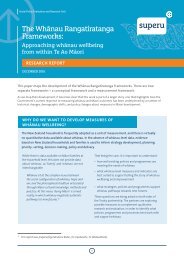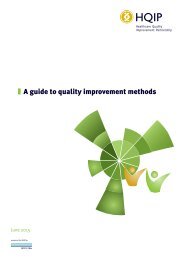2fyY1Py
2fyY1Py
2fyY1Py
You also want an ePaper? Increase the reach of your titles
YUMPU automatically turns print PDFs into web optimized ePapers that Google loves.
2. Extend offline protections online<br />
The United Nations Human Rights Council pronouncement that “the same rights that individuals have offline, they must<br />
enjoy online” (246) suggests that the offline regulation of HFSS marketing to children should be extended to incorporate<br />
marketing in all digital environments. We recommend comprehensive regulation of all types of marketing in the digital<br />
environment, including social media platforms, websites, game platforms and apps, such as advergames. Regulations should<br />
be flexible to incorporate new and evolving digital marketing. Examples of “updates” to make frameworks fit for the digital<br />
world are found in the replacement of the European Union Data Protection Directive (285) by the new GDPR (246), the<br />
on-going revision of the Audiovisual Media Services Directive (209), the modernization of the Council of Europe Convention<br />
108 and the OECD (258) guidelines on the protection of privacy and transborder flows of personal data.<br />
3. Define legal age, rather than leaving commercial interests to do so<br />
If an age-based model for regulating HFSS marketing is chosen as appropriate, a defined age should reflect recent evidence<br />
of the vulnerability of both adolescents and younger children, as outlined earlier in this report. We recommend that policymakers<br />
act in coordination to proactively establish a clear minimum legal age for HFSS digital marketing to children and that<br />
this should be set at 16 years at least.<br />
4. Define marketing directed to children<br />
Challenges arise in defining “marketing to children”, as the Internet locations most visited by children are often not those<br />
“directed at” or “targeting” them but those providing access to a wide range of content (e.g. Google, Facebook, Instagram,<br />
YouTube). The most common current definitions restrict regulation to marketing “directed at” or “targeting” children. On<br />
the basis of experience in regulating digital privacy, and evidence that broadcast regulation restricted to “child-directed<br />
programming” has a limited impact, we recommend that regulation of digital HFSS marketing also address marketing for<br />
mixed audiences, to capture all the marketing that children are exposed to, including that on sites, platforms, apps and<br />
other digital locations likely to be of interest to children, even if children are not the primary target audience. The food and<br />
marketing industries may claim that industry should not be held accountable for the exposure of children to HFSS marketing<br />
“directed at adults”. Nevertheless, children’s exposure, even if it is an “unintended consequence”, has a negative effect on<br />
their health and must therefore be controlled carefully. The US FTC approach in COPPA could provide a model (despite its<br />
limitation of defining children as those under 13 years), as it usefully specifies that “if (a) service targets children as one of<br />
its audiences – even if children are not the primary audience – then (the) service is ‘directed to children’” (79). Provision<br />
should also be made for a mechanism by which media can be assessed externally as directed to children, rather than relying<br />
on claims by digital media and food brands themselves.<br />
5. Draw on existing legislation, regulation and regulatory agencies<br />
National governments could introduce marketing restrictions or bans on marketing HFSS foods to children under various<br />
existing legislation. Depending on the jurisdiction, health, child welfare, children and family, or food legislation (rather than<br />
digital marketing legislation) could be the most appropriate entry point. For example, Article 6f of the Healthy Lifestyles Bill<br />
in Malta includes explicit powers to enact specific subsidiary regulation to implement marketing restrictions for products<br />
(such as HFSS foods) that may have adverse effects on healthy lifestyles (286). Child welfare acts could be another entry<br />
point for legislation: the United Kingdom’s provisions on the protection of children from tobacco products contained in<br />
Part 5 of the Children and Families Act include recent measures on standardized packaging (287). As discussed earlier, the<br />
Alcohol Act in Finland comprehensively covers all forms of marketing. Alternatively, States could update existing marketing<br />
legislation with specific provisions relating to digital HFSS marketing to children to ensure that legislation is better equipped<br />
or streamlined for the digital era. A starting point at a national level would be to map the regulatory landscape so that the<br />
strengths and gaps of the existing legislation are better understood and the most appropriate national entry points for new<br />
or updated legislation are identified.<br />
Regarding regulatory enforcement of restrictions on HFSS digital marketing to children, the model of the “one-stop shop”<br />
introduced for the European Union’s GDPR could be adopted. Furthermore, a network of national regulatory agencies<br />
such as those referred to earlier could be tasked to agree to the provisions of harmonized national legislation in the area<br />
of digital HFSS marketing, which might be effective in reducing its prevalence throughout the European Union. As stated<br />
29






